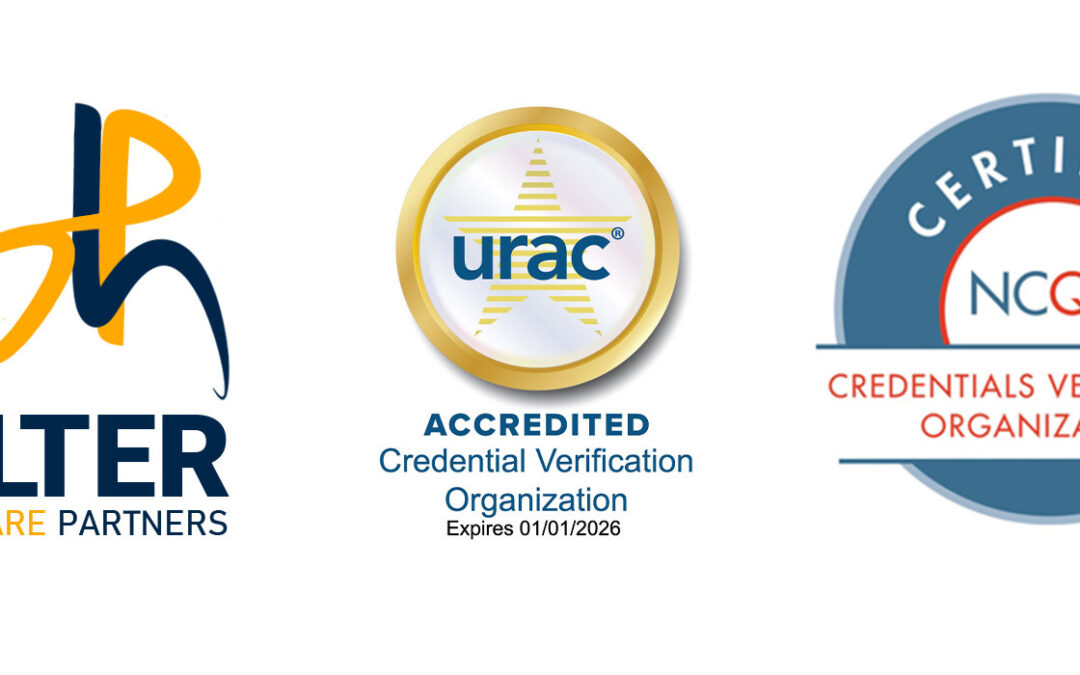
Jul 26, 2024 | Uncategorized
Due to the challenges physicians have faced in recent years, many are experiencing burnout and exhaustion. To address this, the American Medical Association (AMA) has developed a plan aimed at boosting morale. Continue reading to learn more about these developments.
The AMA has announced the AMA Recovery Plan for America’s Physicians to tackle the pressing challenges facing the nation’s doctors. Physician burnout was already a national concern before the coronavirus pandemic, and the pandemic has exacerbated this issue to crisis levels. The Association of American Medical Colleges projects a shortage of 37,800 to 124,000 physicians by 2034. AMA President Gerald Harmon, MD, emphasized the urgency of the situation, stating, “America’s doctors are a precious, irreplaceable resource. Physician shortages, already severe before COVID, have nearly become a public health emergency. If we don’t succeed with this Recovery Plan, attracting young talent to medicine and addressing the shortage will be even more difficult.”
The Recovery Plan focuses on five key areas:
- Supporting telehealth services, including insurance coverage
- Reforming Medicare payment for physician services
- Preventing “scope creep” that expands the practice scope of non-physicians, such as nurse practitioners
- Reforming prior authorization to reduce administrative burdens and avoid care delays
- Addressing physician burnout and reducing the stigma around mental health for physicians
Expanding Telehealth The pandemic led to unprecedented growth in telehealth, with 90% of physicians adopting it for patient care. Continuing telehealth services benefits both physicians and patients. Harmon noted, “The Centers for Medicare & Medicaid Services ensured that telehealth payment rates were equivalent to in-person services, even for audio-only visits. This has proven to be a viable option, offering safety, convenience, and time savings for patients. In rural areas, where geographic barriers pose significant travel challenges, digital health is invaluable.” Harmon stressed the importance of preserving telehealth advancements, saying, “Patients and physicians overwhelmingly support the continuation of telehealth post-pandemic. We are working to update laws and regulations to make this permanent.”
Reforming Medicare Physician Payment For years, Medicare reimbursement for physician services has been inadequate, creating financial uncertainty for physician practices. Harmon explained, “Medicare physician payments, the only healthcare delivery component subject to budget neutrality, have fallen 20% when adjusted for inflation since 2001. Legislative and regulatory changes during the COVID pandemic threatened a 10% cut in Medicare payments this past January. Thanks to the AMA and other medical organizations, Congress averted these cuts at the last minute—a major victory. However, we shouldn’t face this annual uncertainty. We need a permanent solution to ensure the economic viability of physician practices.”
Harmon underscored the need for payment reform, saying, “Predictable financial returns are essential for investing in costly infrastructure like new technologies and treatments. We are done with short-term fixes and looming cuts.”
Click here to continue reading

Jun 5, 2024 | Uncategorized
Summer is here, and many people are spending more time outside, swimming, and taking vacations. It is crucial to wear sunscreen to protect yourself from the sun. Read below for more information from the American Academy of Dermatology about the importance of sunscreen!
With Memorial Day marking the unofficial start of summer and the reopening of many beloved outdoor activities after the COVID-19 shutdown, it’s more important than ever to remember your sunscreen—especially after many of us spent months indoors. The American Academy of Dermatology (AAD) offers a great two-minute video and five tips for proper sun protection.
So get outside, enjoy your favorite activities, and don’t forget to apply that sunscreen. It’s finally summer! Click here to read more about sunscreen from the AAD.

May 29, 2024 | Uncategorized
Amazon In The Healthcare Space
The mere threat of Amazon.com Inc. entering the health care market has already started transforming U.S. health care, and not necessarily for the better. This looming presence has accelerated consolidation, leading to potential consumer disadvantages.
The speculation about Amazon’s involvement prompted two of the largest pharmacy benefit managers, CVS Health Corp. and Express Scripts Holding Co., to merge with major insurers, Aetna Inc. and Cigna Corp. These mergers consolidate more of the U.S. health care system under fewer companies. While the merging companies claim this will reduce costs for consumers and the nation, the reality is likely to be more complex and less favorable.
About The Mergers
These mergers were made possible partly due to the Federal Trade Commission and the Department of Justice blocking the mergers of Anthem Inc. with Cigna and Aetna with Humana Inc. These mega-insurers would have been too preoccupied with their own integrations to pursue such vertical deals and would have been too large to be acquired by other insurers.
UnitedHealth Group Inc. has also played a significant role in motivating these mergers. It pioneered aggressive diversification by acquiring a large PBM in 2015 and through its Optum health-services unit. Its success in patient enrollment, revenue growth, and market valuation has set a benchmark, inspiring similar strategies among its peers. Additionally, profit pressures on PBMs likely made them more open to merging with insurers.
However, Amazon’s potential entry into the health care market is a significant factor driving these deals. Amazon’s technological capabilities, long-term investment approach, vast appetite for new ventures, and tolerance for thin margins have unsettled investors, especially those involved in the industry’s middleman roles. If these mergers are finalized, the result will be unprecedented market concentration, with the three largest U.S. PBMs tied to three of the largest insurers.
Effects On Prescriptions
CVS, Express Scripts, and UnitedHealth currently process over 70% of all U.S. prescriptions. Post-merger, three companies will manage the insurance of over 90 million people, process more than 3.5 billion prescription claims, and generate over $500 billion in revenue. While not every American will have both their medical and drug benefits managed by the same company, many more will in the future.
These integrated companies will have more comprehensive information about their customers and a greater ability and incentive to manage total health spending. UnitedHealth is already deeply integrated, with investments in ambulatory surgery centers and physician groups. The merger of CVS and Aetna, which adds retail pharmacies and primary care clinics to the mix, could significantly impact patient lives.
CLICK HERE to view the original article in its entirety, including informational charts, graphs, and author info.

May 27, 2024 | Uncategorized
The American Medical Association (AMA) recently sent a letter to congressional leaders advocating for updates to the Medicare Physician Payment System. Following a Medicare Payment Advisory Commission (MedPAC) report, the AMA has urged Congress to implement a stable annual payment rate that aligns with inflation and practice costs.
The MedPAC report, presented to Congress on March 15, 2022, recommended maintaining the freeze on Medicare physician payment rates and not increasing them for 2023. The AMA has expressed significant concerns about this recommendation, emphasizing that it would negatively impact patient access to care as practice costs rise.
MedPAC’s report stated that despite the decline in Medicare service volume and revenue due to the pandemic, Congress provided substantial relief funds to clinicians. MedPAC expects these volumes and revenues to rebound to pre-pandemic levels by 2023. However, the AMA argues that financial challenges persist for physicians. They cite ongoing fiscal uncertainties related to the COVID-19 pandemic, statutory payment cuts, the consistent lack of inflationary updates, and significant administrative barriers as major issues affecting the stability of the Medicare physician payment system.
Inconsistency In Recommendation
The AMA also highlighted the inconsistency in MedPAC’s recommendation to freeze physician payment rates while CMS projects an 80 percent increase for Medicare Advantage plans in 2023. Data from the Medicare Trustees show that Medicare physician pay has increased by only 11 percent from 2001 to 2021, with one-third of that increase coming from a temporary 3.75 percent update set to expire this year. In contrast, Medicare hospital and skilled nursing facility payment rates have increased by over 60 percent during the same period. When adjusted for inflation, Medicare physician payment rates have declined by 20 percent over the past two decades, while the costs of running a medical practice have risen by 39 percent since 2001.
Additionally, Medicare physician fee schedule spending per enrollee has declined by 1 percent over the last ten years, while other Medicare benefits spending has significantly increased. For instance, Part B fee-for-service spending per enrollee, excluding physician fee schedule spending, rose by 42 percent over the last decade. Part A fee-for-service spending increased by 3.6 percent, Part C spending by 29.4 percent, and Part D spending by 20 percent.
Free Set To Continue Until 2026
The Medicare physician payment freeze is set to continue until 2026, after which payment updates will resume at a rate of 0.25 percent per year, far below the rate of medical or consumer price index inflation. The AMA warns that unless Congress updates Medicare physician payments to reflect inflation, the gap between payment rates and rising practice costs will continue to widen.
The AMA also referenced a May 2021 study that revealed the high costs of compliance with the Medicare Merit-Based Incentive Payment System (MIPS), amounting to around $12,800 and over 200 hours per physician annually. Furthermore, physicians have not been able to receive annual incentive payments for Medicare Advanced Alternative Payment Models (AAPM) due to the lack of transition opportunities.
The AMA stressed that financial hardships, burnout, and stress are driving many physicians to consider leaving their practice within two years. While expressing gratitude to Congress for the financial relief provided during the pandemic and for preventing a 10 percent physician payment cut in 2022, the AMA urged officials to collaborate with the physician community to develop solutions to the systemic issues plaguing the Medicare physician payment system.
Original article published on revcycleintelligence.com

May 25, 2024 | Uncategorized
Colorado Opioid Epidemic
A spotlight analysis by the American Medical Association (AMA), Colorado Medical Society (CMS), and Manatt Health reveals significant progress in Colorado’s efforts to address the opioid epidemic. The report highlights reforms that have been implemented, while also recommending further steps for policymakers, insurers, and physicians to save more lives.
Analysis Information
The analysis found that Colorado has made notable strides in increasing access to evidence-based treatment for substance use disorders. Several pilot projects have improved care for patients with pain, and increased access to naloxone, the opioid overdose-reversing drug, has saved thousands of lives. “We conducted this analysis because it’s essential that policymakers know what is working and where additional progress can be made,” said AMA President-elect Dr. Patrice A. Harris, who also chairs the AMA Opioid Task Force. “Colorado has implemented many important policies that are impacting patients’ access to care. Using this momentum, we think Colorado can go even further to save lives of those affected by opioid use disorder.”
This Colorado study is the second in a series of individual state analyses by the AMA, following a recent study on Pennsylvania. Based on data, policy reviews, and discussions with key policymakers, the analysis identified four key areas of success in Colorado.
4 Key Areas Of Success
- Adoption of Policies and Funding to Increase Access to Medication-Assisted Treatment: Initial steps have been taken to reduce administrative barriers, increase funding to address workforce issues, and expand Medicaid coverage in residential settings.
- Compliance with Mental Health and Substance Use Disorder Parity Laws: The Colorado Division of Insurance is reviewing insurers’ conduct and has established an ombudsman’s office to help patients access behavioral health care.
- Increasing Access to Non-Opioid Pain Management for Medicaid Patients: Coverage has been extended to non-opioid prescription medications and alternative therapies, such as physical and occupational therapy, and additional behavioral health care options.
- Expanding Access to Naloxone: Early legislation, a standing order for naloxone, Good Samaritan protections, and the elimination of prior authorization for naloxone under Medicaid have been implemented.
“This analysis comes at an important time for Colorado,” said Dr. Debra Parsons, CMS President. “Over the last six years, Colorado has developed policies, enacted laws, and made significant strides in uniting stakeholders to reverse the opioid epidemic. While we continue these successful initiatives, we must closely evaluate their effectiveness to ensure we are directing our efforts appropriately.”
The analysis also highlighted the work of the Colorado Consortium for Prescription Drug Abuse Prevention, which has united hundreds of stakeholders and continues to develop a data-driven dashboard to help direct resources to areas of greatest need. Additionally, the report identified areas for further improvement:
- Eliminating Barriers to Treatment: Further steps are needed to enforce mental health and substance use disorder parity.
- Expanding Access to Medication-Assisted Treatment Providers: Especially in rural areas of the state.
- Leveraging Successful State Pilots: To increase access to multimodal pain care and comprehensive benefit and formulary designs.
- Linking Naloxone Recipients to Follow-Up Treatment: To begin and sustain recovery.
- Evaluating State Policies and Programs: To determine what is improving patient care and reducing opioid-related harms, and to identify any unintended consequences of current policies.
“Many recommendations in this report, especially those related to commercial insurance—such as improving enforcement of mental health parity and conducting more comprehensive reviews of addiction professionals in insurers’ networks—are fair and reasonable steps we can tackle immediately,” said Michael Conway, Colorado Insurance Commissioner and head of the state’s Division of Insurance. “We look forward to working with Colorado’s health insurers and physicians to implement solutions that ensure consumers receive the care they need to help end our state’s opioid epidemic.”
Click here to read the original article on cms.org.

May 23, 2024 | Uncategorized
Are you worried about surprise medical bills? The recently passed No Surprises Act aims to protect consumers, but many people are still unsure about its implications. Fortunately, several organizations have added resources to help you understand the new legislation. Read on to learn more.
Advisories, information sheets, and FAQs are now available to assist hospitals, health systems, physicians, and consumers in navigating the new rules against surprise billing. Despite ongoing legal challenges, key elements of the No Surprises Act took effect on January 1, and various stakeholder organizations are offering guidance to their members.
Latest Updates:
American Hospital Association (AHA):
- On Friday, the AHA published a legislative advisory summarizing the No Surprises Act and its key takeaways. The advisory includes a 15-page detailed summary of the rules. “The hospital and health system field strongly supports protecting patients from surprise medical bills,” the AHA stated. They believe this legislation is a significant step forward in patient protection. The AHA’s advisory webpage also links to additional resources, including an FAQ on good faith estimates for uninsured/self-pay patients, details about the AHA/AMA lawsuit challenging billing dispute resolutions, and information on CMS guidance
American Medical Association (AMA):
- Also on Friday, the AMA published an advocacy update for physicians. It includes a new toolkit focusing on three key issues: notice-and-consent requirements for out-of-network care at in-network facilities, rules about emergency and post-stabilization care, and good faith estimates for self-pay and uninsured patients. An AMA Advocacy Insights webinar on January 20 will explore these topics further.
Centers for Medicare & Medicaid Services (CMS):
- CMS added new online resources for consumers explaining their new billing protections effective January 1. These include protections for emergency care, non-emergency care from out-of-network providers at in-network facilities, and air ambulance services from out-of-network providers. The CMS website states, “Through new rules aimed at protecting consumers, excessive out-of-pocket costs are restricted, and emergency services must continue to be covered without prior authorization, regardless of network status.” The page also provides links to resources that explain what surprise bills are and the new consumer protections.
Additional resources for hospitals and health systems are available from the Healthcare Financial Management Association and the Medical Group Management Association.
For more details, visit the original article on healthleadersmedia.com.

May 9, 2024 | Uncategorized
Arvada, CO April 2024 — RT Welter and Associates, Inc. DBA Welter Healthcare Partners (WHP), a leading provider of comprehensive healthcare business management solutions, proudly announces its achievement of National Committee for Quality Assurance (NCQA) Credentials Verification Organization (CVO) Certification. This recognition underscores WHP’s commitment to delivering unparalleled quality, security and excellence in credentials verification for over 30 years.
Achieving this honor places Welter Healthcare Partners in an elite group of six companies that have achieved the coveted URAC Accreditation and NCQA Certification for Credentials Verification Organization (CVO).
NCQA is a private, nonprofit organization dedicated to improving healthcare quality. NCQA accredits and certifies a wide range of healthcare organizations. It also recognizes clinicians and practices in key areas of performance. NCQA’s Healthcare Effectiveness Data and Information Set (HEDIS®) is the most widely used performance measurement tool in health care. In recognition for its leadership in diversity, equity and inclusion, NCQA has won the Excellence in Diversity Award from the Chesapeake Human Resources Association. NCQA’s website (ncqa.org) contains information to help consumers, employers and others make more-informed healthcare choices. NCQA can be found online at ncqa.org, on Twitter @ncqa, and on LinkedIn at linkedin.com/company/ncqa.
CVO Certification includes rigorous on-site evaluations conducted by a team of healthcare professionals and certified credentialing specialists. A national oversight committee of physicians analyzes the team’s findings and determines certification based on the CVO’s compliance with NCQA standards.
“Our team at Welter Healthcare Partners is immensely proud to achieve NCQA CVO Certification,” said Todd Welter, Chairman and CEO at WHP. “This recognition reflects our ongoing commitment to delivering exceptional CVO value and expertise to our clients. We are grateful for the validation of our dedication to quality, compliance, security, and accurate credentials verification and look forward to continuing to serve our clients with excellence.”
The NCQA CVO Certification reinforces WHP’s ability to provide managed healthcare services with excellence, benefiting both the organization and its members and clients. WHP’s expertise and dedication are translated into tangible benefits for its clients, enabling them to navigate the complexities of network management and expansion successfully. With NCQA CVO Certification, and URAC CVO Accreditation, WHP reaffirms its position as a trusted partner in the healthcare industry.
For more information about Welter Healthcare Partners and its comprehensive healthcare management solutions, visit welterhp.com or contact Jennifer Heuer at jh@welterhp.com or 303-534-0388.
About Welter Healthcare Partners:
Welter Healthcare Partners (WHP) is a leading provider of comprehensive healthcare business management solutions, and credentials verification; empowering physician practices, healthcare providers, payers, hospitals, and organizations of all types to thrive in the dynamic healthcare landscape so they can focus on providing the highest quality healthcare to their patients. With over 30 years of experience, WHP delivers unparalleled expertise and support to its clients, ensuring their success, sustainability, compliance and profitability.
Media Contact:
Jennifer Heuer
Welter Healthcare Partners
Email: jh@welterhp.com
Phone: 303-534-0388

Apr 11, 2024 | Uncategorized
The American Medical Association (AMA) has rolled out a comprehensive plan, named the “AMA Recovery Plan for America’s Physicians,” aiming to address the challenges confronting physicians, particularly exacerbated by the COVID-19 pandemic. This initiative comes in response to the critical issue of provider burnout, which has reached crisis levels. The plan’s key elements include:
- Supporting Telehealth Services: Recognizing the importance of telehealth, especially highlighted during the pandemic, the plan advocates for continued support and insurance coverage for telehealth services. This expansion acknowledges its benefits in terms of accessibility, convenience, and time-saving for both providers and patients.
- Reforming Medicare Payment for Physician Services: The plan underscores the longstanding issue of inadequate Medicare reimbursement for provider services. It calls for reforms to ensure stable and adequate payment, eliminating the annual uncertainties that impede physician practices’ financial stability.
- Addressing “Scope Creep”: The plan aims to curtail the expansion of non-physicians’ scope of practice. For example, nurse practitioners, and maintaining the integrity and quality of healthcare delivery.
- Streamlining Prior Authorization Processes: Recognizing the administrative burden placed on provider practices by prior authorization requirements, the plan advocates for reforms to reduce this burden and avoid delays in patient care.
- Tackling Physician Burnout and Mental Health Stigma: The plan acknowledges the pressing need to address physician burnout and reduce the stigma surrounding mental health issues in the medical profession. It emphasizes the importance of supporting provider’s well-being to ensure the sustainability of the healthcare workforce.
Overall, the AMA Recovery Plan aims to mitigate the challenges faced by physicians. It also safeguards the future of healthcare delivery in the United States. Through these strategic interventions, the AMA seeks to alleviate physician burnout, ensure fair reimbursement, and promote a supportive environment for healthcare professionals.

Apr 4, 2024 | Uncategorized
The American Academy of Dermatology has crafted a comprehensive guide to selecting and applying sunscreen effectively. With the onset of summer marked by Memorial Day and the resurgence of outdoor activities post-COVID-19 restrictions, it’s crucial to prioritize sunscreen application. Don’t forget to slather on that sunscreen as you indulge in your favorite outdoor pursuits—it’s summertime at last! Sunscreen plays a vital role in shielding your skin from skin cancer and premature aging, but its efficacy hinges on correct application. Here are some expert tips from dermatologists:
- Opt for sunscreen with an SPF of 30 or higher, water resistance, and broad-spectrum coverage to shield against both UVA and UVB rays.
- Apply before stepping outdoors to allow around 15 minutes for absorption and protection. Applying it after sun exposure leaves your skin vulnerable to burns.
- Ensure you use enough sunscreen, approximately 1 ounce to cover your entire body adequately—massage it thoroughly into your skin.
- Cover all exposed skin areas, including your neck, face, ears, tops of feet, and legs. For challenging-to-reach spots like your back, enlist assistance or opt for spray sunscreen. Protect your lips with an SPF-containing lip balm.
- Reapply sunscreen every two hours or immediately after swimming or sweating to maintain protection. Sunburn often occurs due to insufficient usage, failure to reapply, or using expired products.
Remember, UV rays penetrate your skin even on overcast days and during winter, so make sunscreen a year-round habit. Whether you’re vacationing or enjoying a stroll in your neighborhood, prioritize sun protection. For more tips on preventing skin cancer, consult a board-certified dermatologist.

Mar 27, 2024 | Uncategorized
Recent research from Oliver Wyman reveals a significant milestone in American healthcare:
Nearly 10 percent of patients in the U.S. are now receiving care through Accountable Care Organizations (ACOs). This finding underscores the rapid emergence of ACOs, once obscure just a couple of years ago, as substantial players in the healthcare landscape, with the potential to challenge traditional fee-for-service models.
According to Niyum Gandhi, co-author of the study, the perception of ACOs as minor players in healthcare is outdated.
The study, which encompassed various healthcare delivery entities that align with the core principles of ACOs, demonstrates their growing influence. ACOs, characterized by taking responsibility for the overall health needs of a specific population and receiving incentives based on cost savings and quality, are reshaping healthcare delivery.
The proliferation of ACOs is not limited to Medicare programs; commercial ACOs are also on the rise. With Medicare currently hosting 150 ACOs, expected to double in number with the announcement of the next round of participants in the Shared Savings Program, the impact is set to expand further. Notably, many organizations participating in Medicare ACOs eventually extend this model to their non-Medicare patient populations.
Currently, between 25 to 31 million Americans receive care through ACOs, spanning various programs and initiatives. This includes Medicare ACO programs, non-Medicare patients in Medicare-oriented ACOs, and those in non-Medicare ACOs.
The study’s analysis reveals a striking statistic:
45 percent of Americans reside in areas served by at least one ACO, with 19 states boasting a majority of their population covered by ACOs. However, critics contend that many current ACOs fall short of realizing the full potential of the model. Rick Weil, another co-author of the study, acknowledges this disparity but highlights the exceptional performance of leading ACOs. These top-tier ACOs are demonstrating remarkable outcomes, such as achieving zero percent premium increases, challenging longstanding beliefs within the healthcare industry.
As ACOs continue to refine their models and improve performance, they have the capacity to revolutionize the dynamics of American healthcare for the better. This shift promises increased efficiency, better outcomes, and ultimately, improved healthcare experiences for patients nationwide.
Source: www.thestreet.com

Mar 21, 2024 | Uncategorized
Embracing change is often challenging, yet it is crucial for personal growth, professional development, and overall self-improvement. Cultivating a positive perspective when confronted with challenges or changes can aid in adapting to unfamiliar situations, pushing us beyond our comfort zones. This article delves into the importance of adaptability, offering insightful examples of scenarios that necessitate flexibility, along with exercises aimed at enhancing one’s acceptance of change.
Self-Reflection: Assessing Your Attitude towards Change
Consider the following statements and select either A or B:
A) I typically perceive change negatively.
B) I view change as an opportunity for growth.
A) I resist change.
B) I recognize the potential benefits of certain changes.
A) I feel uneasy when plans unexpectedly shift.
B) I find changes in plans invigorating.
A) I struggle with altering my routines.
B) I adapt to routine changes with ease.
A) I feel threatened by challenges.
B) I welcome challenges as opportunities for growth.
A) I often cling to a single solution when problem-solving.
B) I remain open to new information and alternative solutions
If you resonate more with the A statements, you might find change uncomfortable. Conversely, if you align with the B statements, you likely possess a greater capacity to adapt to evolving circumstances. Assessing your beliefs and attitudes serves as a crucial initial step toward fostering adaptability. Fixed thinking may hinder one’s ability to embrace change, whereas cultivating a mindset that embraces discomfort amid uncertainty is conducive to personal growth.
Navigating Uncertainty: Embracing Change as an Opportunity
Undoubtedly, change is accompanied by uncertainty and risk. Whether contemplating a career move or facing unexpected shifts in personal circumstances, uncertainty is inevitable. However, embracing change presents opportunities for growth and learning. For instance, deciding whether to accept a new job entails inherent risks. While success isn’t guaranteed, every experience, whether positive or negative, contributes to personal development. Adapting to change requires experimentation and resilience, gradually diminishing the discomfort associated with uncertainty.
The Pitfalls of Rigidity: A Barrier to Innovation
Rigidity, the antithesis of adaptability, impedes progress and stifles innovation. Consider an executive who habitually dismisses novel ideas, perpetuating stagnant practices and inhibiting innovation within the organization. Such inflexibility fosters complacency and obstructs growth. Conversely, adaptable leaders solicit input from team members, fostering a culture of innovation and embracing change as a catalyst for progress.
The Essence of Adaptability: Navigating Change with Resilience
Adaptable individuals possess a blend of curiosity, problem-solving skills, and persistence, enabling them to thrive in dynamic environments. In today’s rapidly evolving industries, adaptability is a defining characteristic of effective leadership. Leaders who embrace change drive innovation and remain attuned to shifting trends, propelling their organizations forward.
Cultivating Adaptability: A Path to Personal and Professional Growth
Incorporating adaptability into one’s mindset requires a proactive approach. Reflect on recent changes and consider the opportunities they present. Embrace uncertainty with an open mind, recognizing that change serves as a catalyst for growth. By adopting an adaptable mindset, individuals can navigate uncertainty with resilience and seize opportunities for personal and professional development.
Ultimately, embracing change entails shifting our perspective and confronting uncertainty with courage. By cultivating adaptability, we not only navigate life’s challenges with resilience but also foster continuous growth amidst uncertainty.

Mar 14, 2024 | Uncategorized
In the intricate ecosystem of healthcare, the significance of accounting and bookkeeping might seem distant from direct patient care, yet it’s deeply intertwined with the vitality of medical practice. While some practitioners gravitate towards the perceived safety of hospital employment, my experience suggests that this choice can often be a detrimental misstep. Surprisingly, at the core of this misjudgment lies the realm of accounting.
Private practice, despite its medical nature, operates fundamentally as a business entity. Success hinges not only on clinical proficiency but also on astute operations management, accurate financial record-keeping, and strategic decision-making. Neglecting these aspects can steer a practice towards the less favorable option of hospital employment. Therefore, it becomes evident that the seemingly mundane tasks of bookkeeping play a pivotal role in shaping the trajectory of healthcare practices, ultimately influencing the quality of patient care and the sustainability of the medical profession.
Learn More About How Welter Healthcare Partners Can Help!

About Todd Welter • MS, CPC Founder and President of Welter Healthcare Partners
Mr. Welter has over 25 years of healthcare industry experience assisting physicians and other providers, hospitals and other facilities with the business side of medicine. Through strategic planning and analysis, Mr. Welter’s main focus is to strategically increase revenues and profitability in this radically changing health care environment.
Mr. Welter has a Masters Degree in Organizational Leadership from Regis University in Denver where he has had an appointment as affiliate faculty in the School for Professional Studies for over ten years. In addition, Mr. Welter holds a faculty appointment at the University of Denver’s University College. In the Health Care Leadership program he teaches Macro Economics in Health Care and Innovative Strategies and Change in Health Care to graduate students.

Mar 11, 2024 | Uncategorized
Change Healthcare, a leading U.S. health technology company, is making strides in recovering from a ransomware attack it experienced in February. The attack, attributed to the ALPHV ransomware group, disrupted crucial operations, causing billing delays and raising security concerns across the healthcare sector.
After paying a reported $22 million ransom, Change Healthcare is gradually restoring its services. Electronic prescription systems, including Rx Connect, Rx Edit, and Rx Assist, are now operational, with full functionality in electronic prescribing, claim submission, and payment transmission.
The attack’s impact extended beyond Change Healthcare, affecting hospitals, doctors, and pharmacies, leading to cash flow issues. To mitigate these challenges, the U.S. Department of Health and Human Services (HHS) eased Medicare rules, allowing affected stakeholders to claim advance funding.
UnitedHealth Group introduced a temporary iEDI claim submission system to assist clients during the service disruption. Meanwhile, ALPHV, the ransomware group responsible for the attack, appears to be winding down its operations amid suspicions of an exit scam, though law enforcement agencies deny involvement.
The incident underscores the critical need for robust cybersecurity measures in the healthcare sector to safeguard patient data and ensure the uninterrupted delivery of care. As Change Healthcare and the industry recover from the attack, proactive security measures will be essential to mitigate future threats and uphold the integrity of healthcare systems.
The severity of the situation is underscored by reports from the American Hospital Association (AHA), indicating that hospitals are experiencing challenges in various facets of their operations. Processing claims, billing patients, and verifying insurance coverage have been hampered, potentially jeopardizing patient care and the financial stability of healthcare facilities.
The ripple effects of this cyberattack extend beyond immediate inconveniences. Health systems are grappling with an array of issues, including difficulties in verifying patient eligibility, communicating pharmacy prescriptions, and maintaining normal cash flow to sustain operations. The incident highlights the vulnerability of the healthcare sector to ransomware attacks, which have been on the rise in recent years, posing a significant threat to patient privacy and safety.
As the investigation unfolds, concerns persist about the potential long-term repercussions of the attack. While efforts are underway to contain the breach, the incident serves as a stark reminder of the critical importance of cybersecurity in healthcare. Organizations like Welter Healthcare Partners emphasize the need for robust security measures and regular staff training to mitigate the risk of cyber threats such as phishing attacks. As the healthcare industry continues to digitize and rely on technology for essential services, safeguarding patient data and ensuring the integrity of healthcare systems remain paramount priorities.

Feb 29, 2024 | Uncategorized
The demand for efficiency, precision, and a personal touch is high in the healthcare field. Welter Healthcare Partners recognizes the significance of blending personal support with technological innovation in today’s business of healthcare landscape. This philosophy underscores our commitment to prioritizing “High Touch & High Technology” in all facets of our services, particularly in our approach to credentialing and coding.
Credentialing is a complex process ensuring healthcare professionals meet qualifications and standards essential for delivering safe and high-quality care. This goes beyond ‘checking the boxes’. It serves as a cornerstone for patient safety and excellent service. WHP leverages our proficiency, streamlined processes, and adherence to regulatory standards to facilitate swift and cost-effective credentialing.
However, what truly distinguishes us is our dedication to fostering genuine human connections. In an age dominated by automated systems and algorithms, we recognize the irreplaceable power of human interaction. Each client account at Welter Health Partners is entrusted to a seasoned and knowledgeable team member. This ensures a personalized touchpoint for addressing concerns and providing expert guidance.
This personalized approach is more than just convenience; it revolutionizes the experience for our clients. With a real person readily available to address queries and resolve issues, we ensure greater accuracy in our work. This also mitigates billing denials! Our clients find reassurance in the knowledge that their needs are promptly attended to, leading to smoother operations and superior outcomes. For over three decades, Welter Health Partners has empowered physician practices, healthcare providers, and organizations across specialties to navigate the intricate landscape of the business of healthcare with success. Our hands-on methodology, coupled with our extensive expertise and technology, enables clients to focus on their core mission: delivering exceptional patient care.

Feb 12, 2024 | Uncategorized
In the world of revenue cycle management, the recent finalization of the CMS rule has sparked intense scrutiny. At Welter Healthcare Partners, we’re diving into its intricacies to understand how it affects individuals, organizations, and most importantly, our valued clients.
Assessing the Impact CMS Rule on Revenue Cycle Management
How Will This Affect Us?
With the CMS rule now in effect, it’s crucial to examine how it will reshape our daily billing operations, influence cash flow, and impact our budget.
A Positive Shift for Providers, Patients, and Billing Companies via the CMS Rule on Revenue Cycle Management:
Despite its focus solely on CMS payers and exclusion of commercial health plans, the new legislation represents a significant step forward. While it may not address all prior authorization challenges, it introduces provisions that promise benefits for providers, patients, and third-party billing companies alike.
Key Changes in Prior Authorization Process:
CMS has established clear timelines for payer decision-making on prior authorizations:
- Urgent requests: Must be addressed within 72 hours
- Standard requests: Decision required within 7 calendar days
Additionally, payers must now provide specific denial reasons, offering transparency and accountability in the prior authorization process. This structured communication is poised to enhance efficiency and predictability for all stakeholders.
Compliance:
Adhering to the new rules, especially regarding decision-making timelines for prior authorizations, is crucial. Third-party billing companies must ensure compliance to avoid penalties, maintain positive relationships with healthcare stakeholders, and assure clients of a seamless healthcare ecosystem interaction.
WHP is Ready for the Challenge!
While the upcoming changes necessitate investments in technology upgrades and unwavering commitment to compliance, the benefits are substantial. Quicker turnaround times for prior authorizations, increased transparency, and improved data exchange are poised to create a more efficient revenue cycle for our clients.
At Welter Healthcare Partners, we embrace these changes, ensuring seamless transitions for our clients. As we navigate evolving regulations and technology standards, our commitment to adaptability remains unwavering. Rest assured, we stand vigilant, ready to implement any necessary adjustments and uphold industry best practices, ensuring a wonderful experience for our clients in the ever-evolving healthcare landscape.

Feb 5, 2024 | Uncategorized
If you’ve ever worked with healthcare costs and insurance, you’re likely familiar with the term “risk adjustment coding.” But what does it entail, and why is it a critical component for both healthcare organizations and insurance companies? In essence, this serves as a mechanism to ensure accurate accounting for the health status of patients and to adjust payments accordingly.
Risk Score for Patients
The intricate process of risk adjustment coding involves healthcare providers using diagnostic codes to denote various aspects of a patient’s health, including age, sex, and any pre-existing conditions. These codes collectively formulate a “risk score” for each patient, estimating the probable cost of providing care over the year. Insurance companies then use these risk scores to modify payments to providers, ensuring that those treating sicker patients are compensated adequately compared to those handling healthier individuals.
Risk Adjustment Coding System
At its core, risk adjustment coding acknowledges that some patients naturally incur higher treatment costs. This could be due to pre-existing conditions or other health factors. This system helps prevent unfair penalization of patients by insurance companies and ensures that healthcare providers receive appropriate reimbursement for the care they deliver.
Risk Adjustment is a Safeguard
Risk adjustment coding safeguards patients from potential denial of coverage or exorbitant premiums based on pre-existing conditions. This ensures that individuals, irrespective of their health status, have access to the necessary care. Simultaneously, risk adjustment coding is pivotal for healthcare providers, particularly those catering to higher-risk patients. Without accurate coding, providers may face unfair penalties from insurance companies, jeopardizing their ability to maintain their practice and deliver high-quality care.
Crucial to Patient Care
Risk adjustment coding is an important component of the healthcare system. It guarantees that patients receive the care they require and that healthcare providers are fairly reimbursed for their services. Understanding the intricacies of risk adjustment coding sheds light on its importance in maintaining a balanced and just healthcare ecosystem.

Jan 30, 2024 | Uncategorized
In a groundbreaking move, the Centers for Medicare & Medicaid Services (CMS) has recently implemented a final rule, led by Administrator Chiquita Brooks-LaSure, that promises to revolutionize the prior authorization process. These reforms, aimed at cutting patient care delays and streamlining the process for physicians, are anticipated to result in substantial savings of $15 billion over the next decade. At Welter Healthcare Partners, we applaud these significant strides towards improving the healthcare landscape and recognize the positive impact they will have on both patients and healthcare providers.
Prior Authorization Reforms:
The final rule addresses prior authorization for medical services across various government-regulated health plans, including Medicare Advantage, State Medicaid and CHIP fee-for-service programs, Medicaid managed care plans, CHIP managed care entities, and qualified health plan issuers on federally facilitated exchanges. This comprehensive approach reflects a commitment to tackling challenges across different sectors of the healthcare system.
Technological and Operational Enhancements:
One of the key highlights of the reforms is the incorporation of an electronic prior authorization process embedded within physicians’ electronic health records. This transformative change is set to bring much-needed automation and efficiency to a previously time-consuming and manual workflow. We appreciate CMS for recognizing the importance of embracing technology to streamline processes and enhance the overall quality of patient care.
Enhanced Transparency and Patient Empowerment:
The administration’s action not only focuses on efficiency but also aims to enhance transparency around prior authorization. By requiring specific denial reasons, public reporting of program metrics, and making prior authorization information available to patients, the reforms empower individuals to make informed decisions about their healthcare. This marks a crucial step towards fostering a more patient-centric healthcare system.
Shortened Processing Time Frames:
CMS’s mandate for shortened processing time frames is a noteworthy aspect of the reforms. Starting in 2026, affected payers will be required to send prior authorization decisions within 72 hours for urgent requests and within a week for nonurgent requests. This commitment to faster response times aligns with the urgency of providing timely and essential care to patients.
Physician Advocacy and Potential Legislative Impact:
The collaboration between CMS and physician organizations, including the American Medical Association (AMA), showcases the power of advocacy in influencing positive change. The $15 billion estimated savings, coupled with the potential impact on the Improving Seniors’ Timely Access to Care Act, reinforces the significance of these reforms in shaping the future of healthcare legislation.
Addressing Concerns and Building a Better Future:
While payers argue that prior authorization is necessary for cost and quality control, physicians often highlight the adverse impact on patient care. The AMA’s survey findings underscore the urgent need for reform, with one-third of physicians reporting serious adverse events resulting from prior authorization protocols. The final rule is a crucial step towards addressing these concerns and creating a more efficient and patient-friendly healthcare environment.
At Welter Healthcare Partners, we recognize the monumental significance of CMS’s $15 billion victory for physicians in the realm of prior authorization. These reforms not only promise substantial financial savings but also signify a commitment to improving patient care, streamlining processes, and fostering transparency. As stakeholders in the healthcare industry, we look forward to witnessing the positive impact of these changes on both healthcare providers and the individuals they serve.
Read the original article here.

Jan 22, 2024 | Uncategorized
California Assemblyman Jim Wood has championed a groundbreaking bill, AB-815, aimed at simplifying the often cumbersome process of credentialing practitioners seeking to join healthcare plans. The bill proposes the establishment of a state board tasked with certifying private and public entities as delegated credentialing entities for health plans. Instead of health plans conducting their own credentialing, they would utilize the information provided by these certified entities.
The proposed state board is set to be a collaborative effort, comprising representatives from health plans, state health departments, physicians, and other healthcare providers. The goal is to have the board operational by July 1, 2024, with the application process for entities seeking certification expected to be in place by July 1, 2025. This move is poised to streamline the credentialing process, reducing redundancies and ensuring a more efficient and standardized approach.
The bill has already cleared the California Assembly and is now on its way to the senate for a vote, marking a significant step toward reforming the healthcare credentialing landscape in the state.
However, as the healthcare industry in various states grapples with evolving credentialing requirements, a broader perspective emerges. The landscape is rife with complex and dynamic regulations, often payer-focused, requiring meticulous attention from Credentialing Verification Organizations (CVOs). The insights shared by industry experts shed light on the nuanced challenges and opportunities within this realm.
One notable observation is the growing trend inspired by Arkansas, where states like California and West Virginia are considering or actively working towards creating or contracting with statewide CVOs. Arkansas has already set up a state-run CVO, and California is slated to accept applications in 2024 for a CVO to contract with. West Virginia has established provisions for contracting with a CVO but has not executed the plan as of yet.
This shift towards centralized credentialing entities indicates a recognition of the need for standardized, efficient processes that can navigate the intricacies of varying state requirements. As the healthcare industry continues to evolve, it becomes increasingly crucial for payers to stay ahead of these changes, ensuring compliance with state-specific mandates and optimizing the credentialing workflow.
California’s AB-815 signals a promising leap towards a more streamlined and efficient healthcare credentialing process. While challenges persist, the industry’s response, as seen in the pursuit of statewide CVOs, reflects a commitment to adaptability and improved operational efficiency. As the bill progresses through the legislative journey, it stands as a beacon of progress in the ongoing efforts to enhance the healthcare system’s effectiveness in California and potentially beyond.

Nov 16, 2023 | Uncategorized
The practice of value-based care has gained significant momentum, driven in part by the COVID-19 pandemic, which highlighted the limitations of fee-for-service reimbursement. Healthcare providers now face increasing pressure to stay up-to-date with emerging trends in the field. In this article, we’ll explore five key trends in value-based care.
1) Embracing Value-Based Care:
A heavy reliance on fee-for-service reimbursement can leave healthcare providers vulnerable to volatility and changes in demand. Those who had invested in value-based care were better equipped to weather the storm, as they had a consistent source of revenue even during periods of low utilization. The rapid changes in healthcare delivery driven by the pandemic underscore the importance of embracing value-based care. Providers have the opportunity to realize a rapid return on their investment in value-based care, thanks to stable revenue streams and new regulatory flexibilities. Innovative care delivery models further enhance this potential.
2) Continued Innovation and Disruption:
Value-based care has long been a hotbed for innovation, and we are seeing a surge in innovation and disruption in both payment and care delivery models. The Centers for Medicare and Medicaid Services (CMS) had prioritized value-based care during the Trump administration, and the Biden administration’s health care goals are likely to further emphasize cost savings, driving a greater push towards value-based care. Commercial payers are also seeking innovative payment and care models, especially in light of the disparities highlighted by the pandemic.
3) Leveraging COVID-19 Infrastructure:
The COVID-19 pandemic prompted transformative changes to the healthcare system. These changes created ongoing opportunities to manage patient care and provide high-quality services in lower-cost settings. Telemedicine and digital health modalities, initially introduced as temporary measures, have become permanent fixtures in healthcare. Providers who adopted digital health solutions during the pandemic can now capitalize on this investment to manage patient care efficiently and see returns on services that were traditionally unreimbursable under fee-for-service arrangements. Programs like the Hospital Without Walls and Acute Hospital Care at Home have also opened doors for lower-cost services that benefit providers.
4) New Opportunities for Provider Alignment:
Recent changes in federal law have aimed to lower barriers to value-based care. CMS and the Office of Inspector General (OIG) have introduced new flexibilities under the Stark law and Anti-kickback Statute for value-based arrangements, allowing providers to enter into arrangements that were previously restricted. These exceptions and safe harbors provide new opportunities for providers. Careful crafting is required to take advantage of these allowances. They enable providers to align and incentivize activities that promote value-based goals. Additionally, information blocking rules ensure patients and providers can access health information, further reducing structural barriers to value-based care.
5) Focus on Social Determinants of Health:
In the value-based care space, especially in Medicaid programs, there is a growing emphasis on addressing social determinants of health. Providers and payers recognize the significant role that non-medical factors play in patient health. Providers and payers can achieve notable improvements in patient health and outcomes by addressing issues such as transportation, food, housing, and language services. Simultaneously, they can maintain relatively low medical costs. The focus on social determinants of health is an emerging trend in value-based care. This trend is expected to grow as stakeholders seek creative ways to manage patient arrangements.
Healthcare providers and payers are emerging from the upheaval caused by the pandemic and the revolutionary changes in healthcare. A renewed interest in value-based care is expected! Opportunities abound to fully investing in patients.
Post adapted from original article published on natlawreview.com
Photo from NCI

Oct 25, 2023 | Uncategorized
The Healthcare Code Landscape Is About To Witness A Significant Transformation
The Centers for Medicare & Medicaid Services (CMS) have recently unveiled the ICD-10-CM 2024 codes. These updates, slated for use by all provider types, encompass both Inpatient and Outpatient settings. The release includes crucial components such as the 2024 Addendum, Code Descriptions in Tabular Order, and Code Tables, Tabular, and Index. Alongside these, the FY 2024 Conversion Table and Present on Admission (POA) Exempt Code List (to be posted soon) complete the comprehensive package of changes.
The 2024 ICD-10-CM changes take effect from October 1st, 2023, to September 30th, 2024. Providing the medical community with a significant overhaul of
395 New Codes, 25 Deletions, and 13 revisions across 17 of the 21 Chapters!
Notably, “Capturing the Context”. Great Job Docs! Your excellent documentation of Where and/or How injuries happened has given way to a major boom in Chapter 20: External causes of morbidity! A whopping 123 new codes out of the 395 overall additions to be exact! These additions range from “Foreign bodies entering through a natural orifice” like batteries, buttons and plastic toys to sharp glass, swords and daggers”!
Some Other Major Changes Include:
- Chapter 3, Neoplasms, a notable addition to includes 13 new codes for desmoid tumors, a rare type of tumor that presents unique challenges in terms of classification and treatment. Chapter 3 introduces 8 new codes related to Sickle-cell conditions with dactylitis. This is a condition marked by severe inflammation of fingers and toes, commonly observed in infants with sickle cell anemia.
- Chapter 6, the Nervous System, focusing on diseases of the nervous system, welcomes 24 new codes, including those for Lafora Body Disease and chronic migraine with aura. These additions reflect a growing understanding of neurological conditions and their complexities.
- Chapter 21, Factors Influencing Health Status and Contact with Health Services, 30 New Codes include a variety of conditions such as carrier status, history codes, and codes related to Social Determinants of Health (SDOH), like New Subcategory Z62 which addresses “Problems Related to Upbringing”; and New Subcategory Z91.A9 “Caregiver’s Noncompliance with Patient’s Medical Treatment and Regimen”.
The changes aren’t limited to specific areas; they permeate through various chapters, addressing an array of conditions and diseases.
Learn more about the author Delana Williams, CPC, CPCI, CEDC
ICD-10 Questions?
If you have any questions or need clarification about the 400 changes to ICD-10 CM for 2024 please contact us. We are here to help!
Medical Coding & Billing newsletter
Keep informed about the ever changing and complex landscape of medical billing and coding, ICD-10 CM and revenue cycle optimization related subjects. Sign up for our “Coding & Billing” newsletter for comprehensive answers, updates, clarification and advice.
Welter Healthcare Partners stands ready to navigate these modifications effectively and provide the utmost support in adapting to the evolving ICD-10-CM landscape. Our team is well-equipped to ensure the accurate coding and compliance essential for seamless healthcare billing operations in this changing environment.
Information collected and condensed by
Delana Williams, CPC, CPCI, CEDC
Coding and Compliance Manager at Welter Healthcare Partners.
Want to learn more? WHP will be hosting TWO ICD-10-CM UPDATE WEBINARS. Stay tuned for more info!
Photo by National Cancer Institute on Unsplash
Page 1 of 3712345...102030...»Last »





















